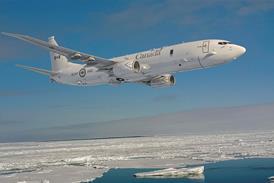Boeing has laid claim to successfully reinventing current fuze and warhead technology to design a penetrator bomb that can defeat the most hardened underground bunkers.
The 816kg (1,800lb)-class BOE1800 is aimed both at defeating concrete bunkers hardened to survive 700kg/cm² (10,000lb/in²) impacts, and at fitting in the internal weapons bay of Lockheed Martin's F-35 Joint Strike Fighter.
Its creation also provides a spark for the munitions industry. The crop of small companies designing fuzes and warheads for penetrator bombs have struggled to overcome the most complex underground targets, which feature voids between layers of thick and thin slabs of hardened concrete.
"We came up with our own bucks to identify what the problem is and how to fix it," says Steven Vukelich, Boeing's director of special programmes. "It's in our interest because we're not going to be able to sell new products unless we have a fuze to put in them."
Boeing became involved in 2006, when the US Air Force asked the company and Lockheed to apply systems engineering methods to penetrator designs.
"Fuze companies can't invest because they don't have the money. They need leadership from the customer and from industry," says Vukelich. "Boeing is the only one I'm aware of that has invested its own money in this."
The first challenge was designing a new warhead case for the GBU-28 penetrator bomb that could survive the impact, which led to a sled test at Holloman AFB in New Mexico in 2006. "Not only did the warhead case survive the test, it actually surpassed all of our expectations," Vukelich says, adding that Boeing invented a new heat treating process for the Eglin steel used for BLU-122 penetrator warheads.
Boeing also had to design a new fuze circuit board that survive a resonance backlash from a high-speed impact into a hardened target, and a fuze well that would remain intact as the penetrator buries deep into a bunker.
Lacking the engineering data on the FMU-152 fuze, Boeing decided to use the system it developed for the GBU-39 small diameter bomb. "It was very similar to the FMU-152 in design, plus we owned it," Vukelich explains.
A fuze successfully survived a second sled test, despite a glitch in the test equipment that prevented it from arming the warhead. Fuze supplier KDI later detonated the intact fuze in a laboratory.
Source: Flight International























